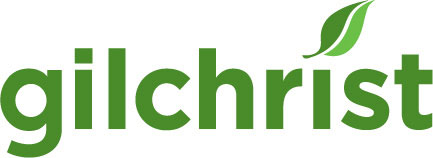The Difference Between Nonprofit and For-Profit Hospices
When it comes to choosing a hospice, there are important factors to consider. One is whether the organization is for-profit or nonprofit. Gilchrist is proud to be a nonprofit 501(c)(3) charitable organization, committed to caring for anyone in need, regardless of insurance status or ability to pay.
For-profit vs. Non-profit: What’s the Difference?
For-profit companies are focused on making a profit for owners and shareholders. Nonprofit organizations are focused on fulfilling their mission. While there are many high-quality for-profit hospices, a focus on the bottom line may come at the expense of patient care, according to the findings of a recent report commissioned by the National Partnership for Hospice Innovation (NPHI). The report analyzed cost and quality differences between for-profit and nonprofit hospices serving Medicare beneficiaries, using data from FY2017.
Findings from the NPHI Report Comparing Nonprofit and For-profit Hospices
- Nonprofit hospices provided patients with 10% more nursing visits, 35% more social worker visits, and two times as many therapy visits as for-profit hospices per patient day.
- Nonprofit hospice patients received nearly three times as many physician or nurse practitioner visits per patient day than for-profit hospices.
- For-profit hospices have significantly higher margins (19.9%) compared to 3% for nonprofits.
- For-profit hospices spent 300% more on advertising than its nonprofit counterparts.
- Nonprofits spent more per day for direct patient care than for-profits.
- The live discharge rate was 21% for for-profit hospices compared to 12% for nonprofits. Although some patients do get better and therefore no longer need hospice, a high live discharge rate may indicate that patients are pushed out when their care becomes expensive or that they are dissatisfied with their care.
- The patients discharged alive from for-profit hospices incurred 40% higher Medicare Part A costs in the two weeks after discharge, which indicates that the hospice would have incurred high costs to care for them had they not been discharged.
- Nursing care costs per day per patient for nonprofits were $41.21 compared to $27.88 for for-profits.
- Nonprofits spent more on non-reimbursable costs, such as bereavement services, volunteer programs and palliative care programs.
Why Are There Differences Between For-profit vs. Nonprofit Hospices?
Hospices are reimbursed by Medicare on a per-day rate for each patient, so they receive the same reimbursement amount regardless of how much care is actually provided to the patient on any given day. This creates an incentive to ration services: The fewer services provided, the larger the profit margin.
While nonprofit organizations such as Gilchrist follow the same reimbursement model, their status as charitable organizations allows them to raise funds from the community to provide care that is not compensated by Medicare or private insurance. And, they are not beholden to shareholders or private owners whose motivation is to maximize profit.
The proliferation of for-profit hospices in the past 20 years indicates that hospice is indeed a profitable business. From 2000 to 2017, the number of hospice users increased from 534,000 to 1.5 million while the number of hospices increased from 2,255 to 4,488, with much of the growth from for-profit organizations entering the market. In 1990, 95% of hospices were nonprofit. By 2017, for-profit companies comprised 69% of the hospice market. Between 2000 and 2018, Medicare hospice expenditures increased from $2.9 billion to $19.1 billion.
While the profit status of a hospice is not the only factor to consider when choosing a hospice, it should be a significant consideration. After all, when it comes to care at the end of life, do you want a hospice team focused on what’s best for the bottom line or what’s best for your loved one?
To learn more about Gilchrist and what sets us apart from other hospice organizations, visit gilchristcares.org/choice.


